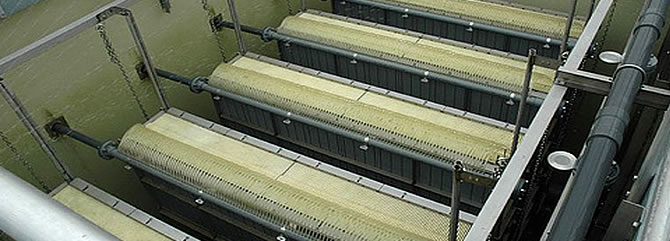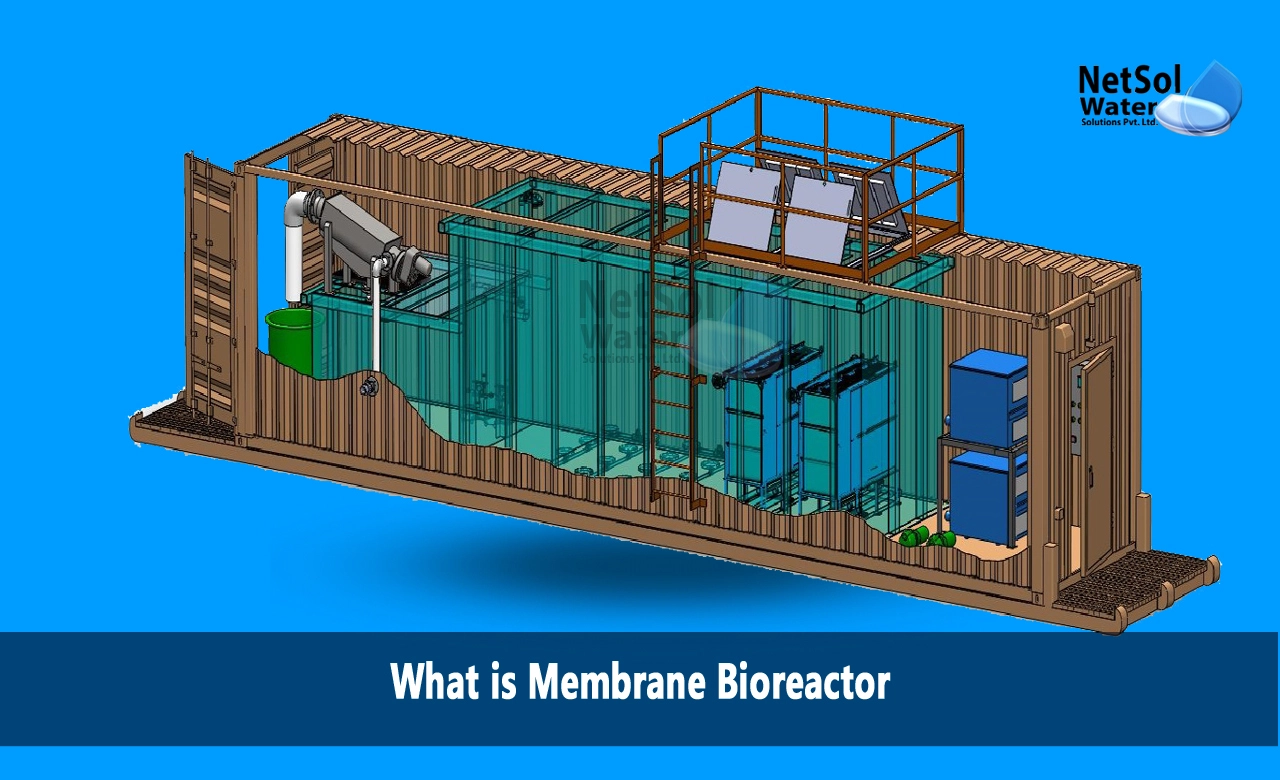How Membrane Bioreactor Can Improve the Quality of Wastewater Treatment
Wiki Article
Comprehending Membrane Bioreactors: The Future of Wastewater Therapy
Membrane layer bioreactors (MBRs) stand for a noteworthy advancement in the field of wastewater therapy, incorporating biological processes with advanced membrane purification to boost effluent high quality. As international water scarcity and rigid regulative structures come to be increasingly pressing concerns, MBR modern technology offers an efficient action through its capability to lessen footprint and enhance resource recovery.What Are Membrane Layer Bioreactors?

The core components of MBR systems consist of a bioreactor where microbial task occurs and a membrane layer unit that filterings system the blended alcohol. This dual functionality makes it possible for the synchronised destruction of raw material and solid-liquid separation in a single action. MBRs can run in both submerged and exterior arrangements, with immersed systems being more common due to their compact layout and functional performance.
The fostering of MBR modern technology has actually gotten traction in different applications, ranging from community wastewater treatment to industrial effluent monitoring. MBRs are specifically useful in circumstances where area is strict or limited effluent quality criteria have to be satisfied. By preserving a high concentration of microbes within the bioreactor, MBRs boost the deterioration of organic toxins, therefore producing higher therapy performances compared to traditional approaches.
Trick Advantages of MBR Modern Technology
The integration of biological therapy with membrane layer filtering in MBR systems supplies countless benefits that set it aside from conventional wastewater therapy techniques. One of the main benefits is the boosted effluent high quality. MBRs effectively eliminate put on hold solids and microorganisms, achieving greater degrees of purification that satisfy rigorous discharge requirements and promote water reuse applications.
Another considerable benefit is the lowered sludge production. MBR systems generate less excess sludge, causing reduced disposal prices and a decrease in environmental effect. The shut nature of the membrane layer system decreases the risk of odor emissions and improves general procedure control.
Finally, MBRs are functional and versatile, making them suitable for various wastewater types, including industrial and community sources. The capability to incorporate with sophisticated therapy innovations additionally boosts their performance, making MBRs an encouraging remedy for the future of wastewater monitoring.
Obstacles and Limitations of MBRs
While MBR modern technology supplies countless benefits, it additionally deals with a number of difficulties and restrictions that can impact its prevalent adoption. One substantial obstacle is the high funding and operational expenses associated with MBR systems. The initial financial investment for membrane layer products and the required infrastructure can be substantial, making it much less obtainable for smaller sized sectors or districts.Furthermore, membrane fouling remains a critical concern that can reduce system performance and rise maintenance demands. Fouling takes place when solids, raw material, or microbes collect on the membrane surface area, bring about minimized permeability and calling for regular cleansing or substitute.
Another constraint includes the intricacy of the technology. MBR systems need knowledgeable workers for procedure and upkeep, which can be an obstacle in regions with restricted technical expertise. In addition, the disposal of spent membrane layers presents ecological concerns, as the products are often not eco-friendly and can add to lose management difficulties.
Last But Not Least, while MBRs can efficiently deal with a wide variety of wastewater, they might not appropriate for all applications, especially those with high focus of fats, oils, and oils, necessitating additional study and innovation to deal with these restrictions.
Applications of Membrane Layer Bioreactors
In different fields, membrane bioreactors (MBRs) have become a versatile option for wastewater treatment (Membrane Bioreactor). Their applications extend local, industrial, and agricultural setups, showcasing their flexibility and effectiveness in diverse atmospheres. In local wastewater therapy plants, MBRs significantly enhance effluent quality, permitting water reuse and minimizing the ecological effect of released wastewaterIndustrially, MBRs are used in food and drink handling, fabric production, and pharmaceutical manufacturing, where they effectively treat high-strength waste streams. Their capability to handle varying tons and varying contaminant focus makes them especially beneficial in these fields. In addition, MBRs assist in the elimination of microorganisms, suspended solids, and organic matter, adding to conformity with rigid discharge regulations.
In agriculture, MBRs are significantly made use of for dealing with agricultural runoff and animals wastewater, making it possible for the healing of nutrients for fertilizer manufacturing. They likewise aid in the therapy of greywater for irrigation, promoting lasting water management techniques.
The adaptability of MBRs is additional confirmed by their combination with other modern technologies, such as anaerobic food digestion and advanced oxidation processes, enhancing general performance like it and source healing in wastewater treatment systems.
The Future of Wastewater Therapy
Developments in modern technology and an expanding emphasis on sustainability are forming the future of wastewater treatment. Membrane layer bioreactors (MBRs) exemplify this change by incorporating biological therapy processes with membrane layer filtration, causing top notch effluent suitable for reuse. The fad towards circular economic climates is prompting facilities to embrace MBRs for their ability to recover sources, such as water and nutrients, from wastewater.Developments in membrane layer materials and arrangement are improving the effectiveness and longevity of MBR systems, decreasing operational expenses and power consumption. Smart modern technology integration, consisting of real-time monitoring and automated control systems, is additional maximizing performance and allowing anticipating maintenance, therefore lessening downtime.
Moreover, regulative stress and societal expectations are pressing municipalities and markets to embrace even more lasting practices. Membrane Bioreactor. The shift in the direction of decentralized wastewater treatment remedies is gaining traction, enabling local therapy that reduces navigate here transportation expenses and energy usage
Verdict
Membrane layer bioreactors (MBRs) represent a transformative method to wastewater therapy, incorporating biological processes with innovative membrane technology. The benefits of MBRs, including enhanced effluent top quality, minimized spatial requirements, and reduced sludge production, place them as a feasible service amid expanding urbanization and stricter ecological laws. Regardless of existing difficulties, the ongoing innovation in membrane products and operational methods guarantees to boost the effectiveness and fostering of MBRs, ensuring their pivotal role in the future of lasting wastewater monitoring.Membrane layer bioreactors (MBRs) stand for a notable development in the field of wastewater treatment, incorporating organic processes with advanced membrane purification find out this here to boost effluent high quality.Membrane bioreactors (MBRs) combine organic therapy processes with membrane filtration to properly deal with wastewater.The combination of biological therapy with membrane layer filtration in MBR systems offers countless benefits that set it apart from traditional wastewater therapy techniques. Membrane bioreactors (MBRs) exhibit this shift by integrating organic treatment procedures with membrane layer filtration, resulting in premium effluent appropriate for reuse.Membrane bioreactors (MBRs) stand for a transformative method to wastewater therapy, integrating organic procedures with sophisticated membrane layer technology.
Report this wiki page